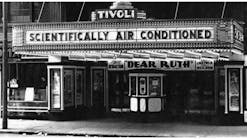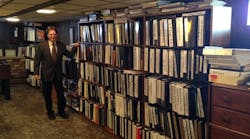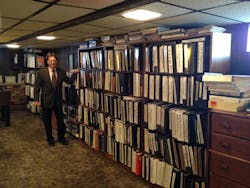In 1975, HPAC Engineering Editorial Advisory Board member Bill Acker was fresh out of college, working as an engineering draftsman for American Can Co. (now Georgia-Pacific) in Green Bay, Wis. He was hired to do industrial HVAC work, but soon was asked to engineer steam and condensate return, compressed-air, and paper-machine piping, as well as boiler and steam-turbine systems.
“I did not know how to do a lot of this work,” Bill recalled recently, “so I had to learn fast by utilizing other engineers.”
In those days, it was not uncommon for engineers to tear articles from trade publications and file them for future reference. Bill’s more experienced colleagues had been doing it for years, amassing impressive personal libraries, which they kept in metal file cabinets in their offices and were more than happy to share for the benefit of a rookie engineer.
“I really felt overwhelmed with my lack of knowledge,” Bill said, “so I spent a lot of time on weekends making copies of these files.”
Bill organized his copies by subject and stored them in three-ring binders. Of particular interest were articles on performing engineering calculations.
“For instance, when I was learning piping pressure-drop calculations, I would study every article and/or book I could get my hands on and indexed them in my binders,” Bill explained. “Then, when I had enough information, I would document all the calculations and then later develop these calculations into computer programs with my colleague Mr. Nels E. Strand Jr. Then, I would move on to my next area of study, which I am still doing today.”
Today, Bill’s engineering library consists of approximately 1,700 three-ring binders full of technical articles, as well as many books, which line the walls of his basement. He said he consults his library three or four times a week.
Bill Acker and a small portion of his engineering library.
When asked to name resources that have been particularly instrumental in his development as an engineer, Bill cites HPAC Engineering articles by Frank Caplan, William Sisson, and Victor Ganapathy in the area of psychrometrics and Caplan, Ganapathy, and Adam Zanker on the subject of pressure-drop calculation.
Whenever I find myself in an existential crisis of sorts, wondering if what we in the trade press do really matters, all I have to do is think of Bill’s story, and I am reminded of the role the content we produce has played—and will continue to play—in furthering careers, advancing the HVACR industry, and raising the bar in the engineering profession. Sure, we are not curing diseases (unless you count sick building syndrome: http://bit.ly/Harlos_0914) or brokering peace (unless you count that between engineers and architects: http://bit.ly/McDonell_1107), but we are contributing to a body of knowledge used to protect the health, safety, and comfort of building occupants and the bottom lines of building owners/operators.
If you have been on the fence about contributing content to HPAC Engineering, I hope Bill’s story provides the nudge you need to commit. Writing for a trade publication is a great way to give back to your profession (Bill continues to “pay it forward,” having recently completed an article on calculating water recovery from air-conditioning cooling coils) and increase your visibility in the industry. There are multiple ways to contribute: technical article, case study, commentary. If you have an idea, the best first step is to contact me (216-931-9980 or [email protected]). In the meantime, if you are looking for inspiration, you can download our 2016 editorial calendar HERE.
I hope to hear from and work with you.










